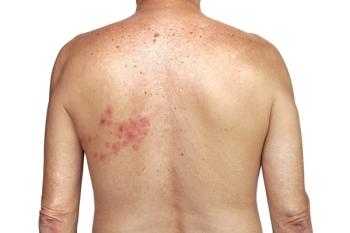
Shingles, Nerve Paths, and Dermatomes
Learn how the varicella zoster virus reactivates as herpes zoster.
Individuals exposed to VZV will initially develop chickenpox, a highly contagious disease that typically affected children before an effective vaccine to prevent it was introduced in the United States in 1995. Once the infection subsides, the virus remains inactive in the spinal ganglia, the nerve cells that connect the spinal cord to nerves throughout the body.
When the immune system can no longer suppress the virus for any of a number of
Each dermatome is connected to a single spinal nerve that sends signals of pain, burning, pressure, and temperature to the brain through it. Dermatomes can overlap to a degree, with the exact layout varying slightly from one individual to another.
Dermatomes occur all over the body, which means that the shingles rash can emerge almost anywhere, including the torso, legs,
The herpes zoster virus can also damage and inflame the sensory nerve path it travels. The resulting debilitating pain, known as
In the United States, 1 out of 3 people will experience shingles during their lifetime.1 The risk increases with age as an individual’s immune system declines and is no longer able to suppress the virus. About half of all shingles cases occur in people over the age of 50.
The only way to protect the at-risk population that carries the virus from developing shingles and its associated complications is through vaccination. Since 2017, Shingrix has been the FDA-approved and preferred vaccine for the prevention of shingles in adults 50 years and older.
Delivered in 2 doses administered 2 to 6 months apart,
“Shingles vaccination is the only way to protect against shingles and postherpetic neuralgia (PHN), the most common complication from shingles,” noted the CDC on its website.2 “Since your risk of shingles and PHN increases as you get older, it is important to have strong protection against shingles in your older years.”
References
- Shingles burden and trends. CDC. Updated August 14, 2019. Accessed November 24, 2021.
https://www.cdc.gov/shingles/surveillance.html - Shingles vaccination. CDC. Updated January 25, 2018. Accessed November 24, 2021.
https://www.cdc.gov/vaccines/vpd/shingles/public/shingrix/index.html
Newsletter
Pharmacy practice is always changing. Stay ahead of the curve with the Drug Topics newsletter and get the latest drug information, industry trends, and patient care tips.











































































































































































































